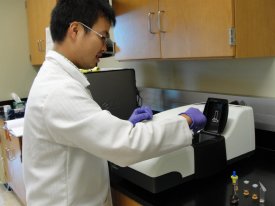Researchers in the new environmental nanoscience laboratory at Baylor University's Department of Geology (Texas, USA) hail the Zetasizer Nano from Malvern Panalytical as an indispensable laboratory instrument. Run by Dr. Boris Lau, the new laboratory addresses cutting edge research focusing on the fate and transport of nanomaterials in an aquatic environment.
Able to measure both particle size and zeta potential the Zetasizer has a role in every project within Dr. Lau's team, proving to be an essential tool. "My whole team uses the Zetasizer Nano," said Dr. Lau. "If you do this type of work you need a Zetasizer."

Up and running since September 2009, Dr. Lau's laboratory is studying the behaviour and interactions of both natural and synthetic metal-based nanoparticles, such as metal oxides and metal sulphides, in water. This research has significant implications in areas such as water treatment and the biological uptake of manufactured nanoparticles.
By coupling the Zetasizer Nano with a Quartz Crystal Microbalance with Dissipation Monitoring (QCM-D) the Baylor team is able to correlate changes in particle size and charge with changes in adsorption of nanoparticles on environmental and physiological surfaces.
As well as holding the position of assistant professor at Baylor, Dr Lau is currently the particulate contaminant research committee chair of American Water Works Association (AWWA). Having used Zetasizer systems for the last ten years, when he set up the new laboratory he immediately understood the value of purchasing a Zetasizer Nano.